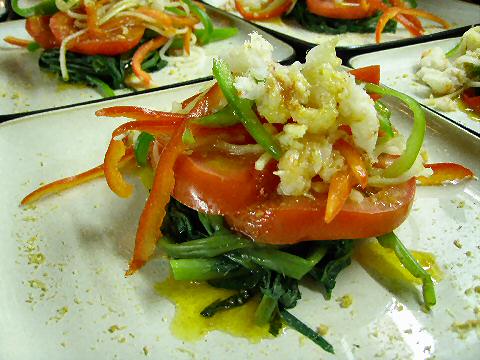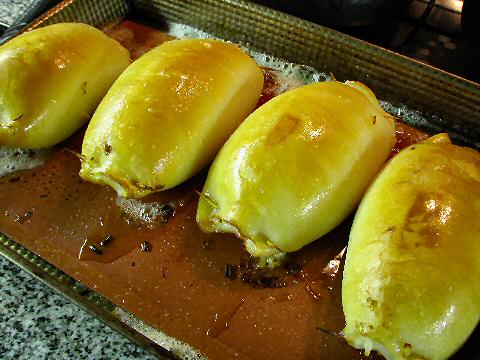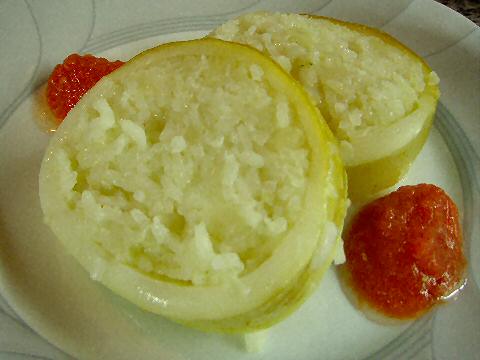“Filipino cuisine could easily be the original fusion cuisine. After all, more than 400 years of Chinese, Hispanic, American and various other influences have blended together in perfect harmony for a very individual, very unique cuisine that is simply sarap (delicious).”
– Datin Hjh Zainah Bujang, General Manager of the Sheraton Utama Hotel.
Buenos Aires – In nearly three years of Casa SaltShaker dinners I don’t think I’ve had such a contentious response as to this last weekend’s dinners. Apparently, Filipino cuisine, or the idea of it, inspires quite a reaction amongst many diners. I received several e-mails from people who wanted a reservation at Casa S, but found the idea of our theme anything from “unpleasant” to “completely unacceptable.” More than one person informed me categorically that they “don’t like” or “hate” Filipino food. Really? All of it? What about the cuisine is it that you don’t like? One woman even responded to my query (more politely worded) that she’d never tried it, but was flat out certain that she wouldn’t be able to stomach it.
Now, having spent a good portion of my adult life in the East Village in NYC, home to several Filipino restaurants, one of which was where I spent Sunday brunch probably twice a month for many years, I don’t get it. I have no idea what it was these folk think the cuisine consists of. I’ve mentioned in these posts having lunch a couple of times at Grill 28 in New York – and sure, we had dinuguan, a pork liver and blood stew – but is that any further off the charts than, say, a morcilla sausage is here in BA? We also had vegetable springrolls, chicharrón (which is a common enough dish in Latin American cooking, or chitlins in the U.S., braised pork belly, and shrimp and green beans in coconut milk. There’s a whole lot of variety in the cuisine – and even for folk who might be worried that we’re going to serve something “weird”, let’s see – we’ve served pasta with intestines at sold out Italian meals, veal tongue at Romanian dinners, lamb’s tongue at our Doctor Who dinner, sweetbreads at more than one event, kidneys, heart, gizzards… from various animals – it’s worth remembering that we serve dishes “inspired” by various cuisines, not necessarily traditional dishes.
Still, it was a visceral reaction from potential customers that was surprising. On to the food, and what they missed….

From there, I’d looked at a “chorizo and bread soup” – but the recipes and descriptions I found seemed a little anemic… or just not quite what I wanted – simple beef broth with sliced onions, sliced chorizos, and croutons atop. Instead, I made a panade, a slow cooked bread and caramelized onion soup that I’ve made made many times before – with a twist – I pureed the soup without the onions, leaving them as a textural component, and then sauteed three kinds of chorizos – loganizas, cantimpalos, and candelarios, drained them, and added them to the soup. Cooked them all together for another half hour or so to meld the flavors.


This was my favorite dish of the evening. It just turned out as I imagined it would. The original dish called for small squid to be stuffed with rice, garlic, onions, chilies, and tomato, and then charcoal grilled. I had this sort of white on white vision of the dish instead – I filled large squid (roughly 8-10″ long) with a mix of partially cooked jasmine rice, garlic, onion, and water chestnuts, then broiled them in the oven until they were a glistening, golden brown. I sliced them, and served them with little spoonfuls of hot sauce made from equal parts tomatoes and jalapeños with a splash of lime juice and salt for zip. Also on the table were cruets of garlic vinegar, a common accompaniment with Filipino food, and it really added a nice touch to the dish.
The main course, a simple, hearty braised bondiola, or pork shoulder, in a blend of soy sauce, garlic, bay leaves, onion, tomato, sugar and salt. I braised it for about 5-6 hours, until it was so tender it was falling apart, then sliced it and served it with potatoes that had first been boiled, then sliced and broiled with some olive oil. A little of the reduced cooking liquid from the pork over the top and we were all set.

Need I say anything more about Filipino inspired cooking?
I don’t get it, either, Dan. I’ve enjoyed Filipino food quite a bit whenever I’ve had it. Your dinner certainly looks delicious.
While not contentious about a Filipino menu, I will admit to a bit of apprehension. In many parts of Manhattan Filipino food meant “comidas chinas y criollas.” These were not the places to sample either cuisine but to get a cheap dish of rice and beans and some kind of fried meat (pork for me, please), all of it covered with hot sauce and washed down with cold, cheap beer.
So, yes, while that stuff was fine, I had no idea what would be placed in front of me at Casa Saltshaker. But, as I’ve enjoyed dining at CS many times before, I had complete faith in your cooking, Dan. I was really happy with all your dishes — as always.
I’m pretty sure I should thank you also for not attempting a dinuguan. I would have tried it, of course: then again, I could have fainted.
But couldn’t the same be said about many a cuisine, especially the restaurants in Manhattan? There are a ton of places from various isles of the Carribean that could be described identically, many a Chinese place certainly, and even, say, cheap Italian joints, among them.
It wasn’t so much that people might have been apprehensive, as you were, perhaps not knowing the cuisine, or even not being sure just what I’d do to the dishes, it was more the blanket “I hate that food”, as if there was something innate about the cuisine that was loathsome, or as if it could all even be lumped into one style.
It’s simple really. People aren’t familiar with Filipino cuisine. People are afraid of what they don’t know. Little do they know is that Filipino cuisine is probably the most accessible cuisine in all of Asia because of the variety and balance of flavors. When you get down to it, how can you go wrong? Filipino cuisine is a mixture of Malay, Spanish, Chinese, and American cuisines. I don’t know about other folks, but those cuisines are some of the best in the world. Rolled into one and you’ve got a spectacular cuisine that appeals to most palettes ….. if given a try.
Beth, that was sort of my first thought, but I think it’s too simplistic an answer – we’ve offered up dinners of Nigerian and Ghanian cuisines from Africa, Mongolian from Asia, Romanian from Europe, and a wide variety of off-beat, non-national themed dinners. And while people have expressed apprehension, or concern about what it is they might be eating, I never got the “I won’t come if you’re serving that cuisine” kind of reactions until this dinner. I almost have to think it’s some sort of shared anti-Filipino kind of thing, that just happened to be amongst a good number of people who looked at coming that evening. These were people who weren’t even willing to hear about what might be on the menu – they were dismissive and borderline nasty about it, as if there was something offensive in our even having offered it.
[…] Day at Casa S this last weekend. This time, unlike the last, I didn’t get all the negative vibe about the food in advance – that’s a step in the right […]